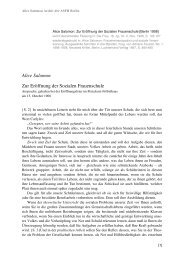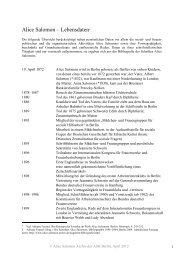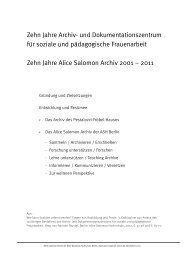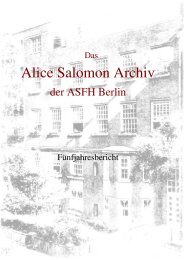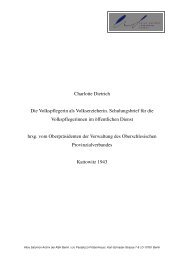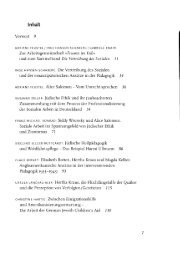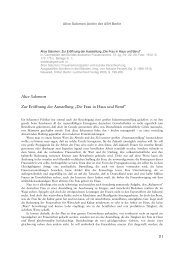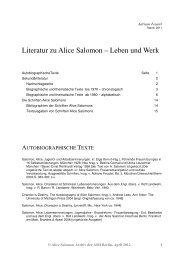Teaching Gender in Social Work - MailChimp
Teaching Gender in Social Work - MailChimp
Teaching Gender in Social Work - MailChimp
You also want an ePaper? Increase the reach of your titles
YUMPU automatically turns print PDFs into web optimized ePapers that Google loves.
dur<strong>in</strong>g the Balkan wars (1912 – 1913) and World War I (1915 – 1918). Between<br />
1912 and 1918 more than a thousand women were tra<strong>in</strong>ed. Most of<br />
them were young women of middle- or upper-class backgrounds: housewives,<br />
teachers and students.<br />
In 1914 Queen Eleonora <strong>in</strong>vited two American nurses (from the<br />
American Red Cross) to Bulgaria, who were given the task of modernis<strong>in</strong>g<br />
nurse education <strong>in</strong> Bulgaria. At the start of the war they went to the town of<br />
Plovdiv, where they began home visits, <strong>in</strong> collaboration with members of the<br />
local “Samarjanka” society. Poor families and sick people <strong>in</strong> the town and <strong>in</strong> the<br />
villages close to Plovdiv were visited. A former “Samarjanka” society president<br />
by the name of Harizanova remembered: “At that time the Samarjanka society<br />
focussed its activities on the poor families of wounded soldiers, there was an<br />
urgent need for such nurses. Immediately after their arrival <strong>in</strong> Plovdiv and at<br />
the first meet<strong>in</strong>g with members of the society, they impressed everybody by<br />
their strong organisational spirit. Quiet and modest <strong>in</strong> their nurs<strong>in</strong>g cloths,<br />
they went <strong>in</strong> ra<strong>in</strong>, w<strong>in</strong>d and snow, from home to home, accompanied by one<br />
or two members of the board of the “Samarjanka” Society and the local priest<br />
<strong>in</strong> outly<strong>in</strong>g residential districts of Plovdiv.” 11 The same author, Harizanova,<br />
also published an article on the occasion of the death of Helen Scott Hey (one<br />
of the two American nurses), <strong>in</strong> which she wrote that “(…) For a period of<br />
one and half years, we and the two Americans went untir<strong>in</strong>gly <strong>in</strong> the outskirts<br />
among poor or wounded soldier families, and <strong>in</strong> the even<strong>in</strong>gs when we needed<br />
to relax, the two nurses worked on the city map and lists of the sick (...)”. 12<br />
In this way the “Samarjanka” women started regular home visit<strong>in</strong>g<br />
practice. They also began to document their visits and to describe the family<br />
situations, to collect data about poor families dur<strong>in</strong>g the war and to report on<br />
what their own activities. They were able to adopt the methods of home visits,<br />
<strong>in</strong>clud<strong>in</strong>g <strong>in</strong>terview<strong>in</strong>g clients and document<strong>in</strong>g cases.<br />
These methods were established <strong>in</strong> both voluntary and professional<br />
social work after the war <strong>in</strong> Bulgaria. After the war many women com<strong>in</strong>g<br />
from these “Samarjanka” societies cont<strong>in</strong>ued to work among the poor.<br />
They cont<strong>in</strong>ued to visit the outskirts and to give advice to poor families or<br />
11<br />
Sofia state archive, F. 360 (Archive the Nurse school <strong>in</strong> Sofia), op.1 , A.e 51, l.7-10.<br />
12<br />
Mir newspaper, N 9730, December 15, 1932.<br />
132



